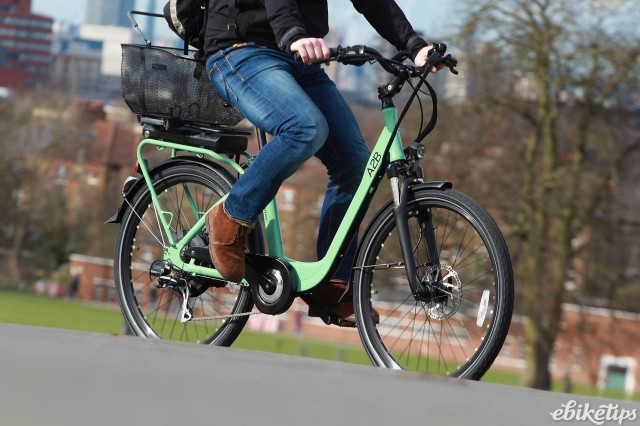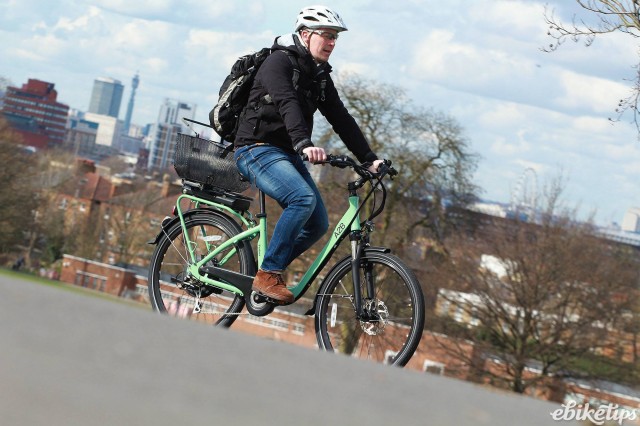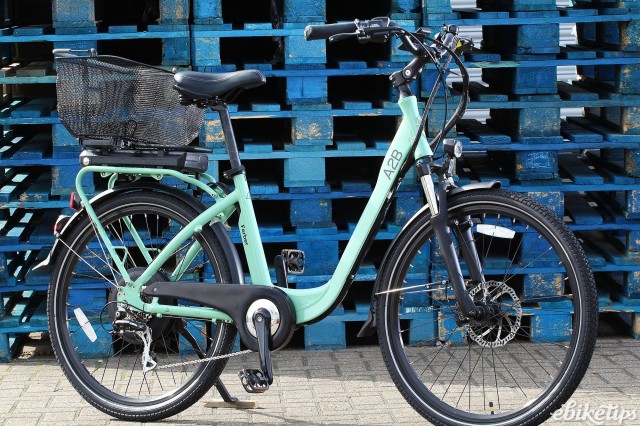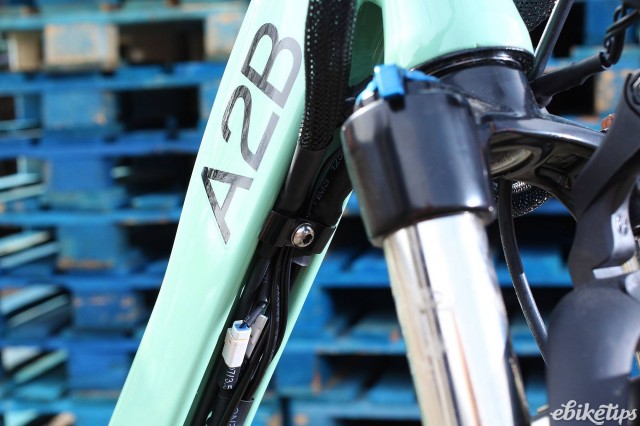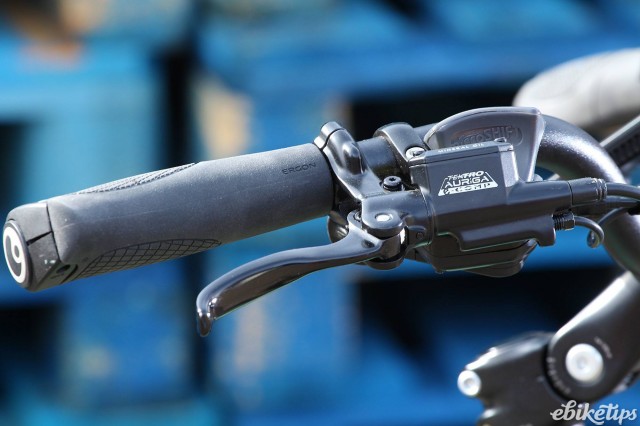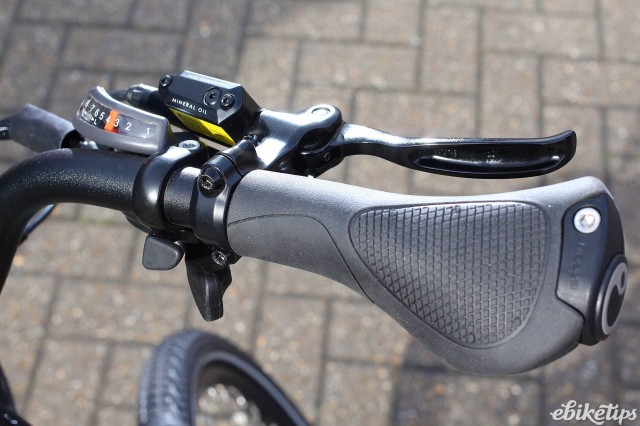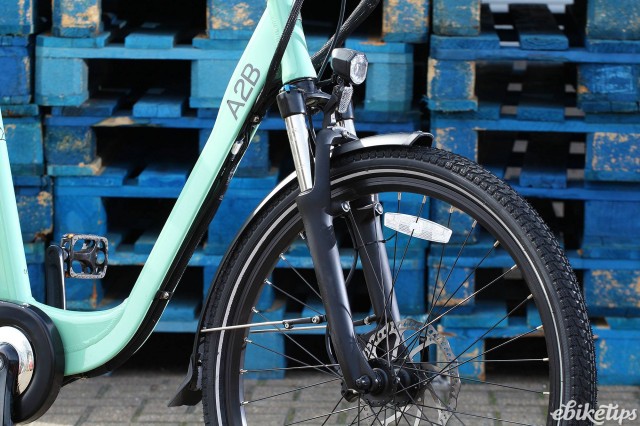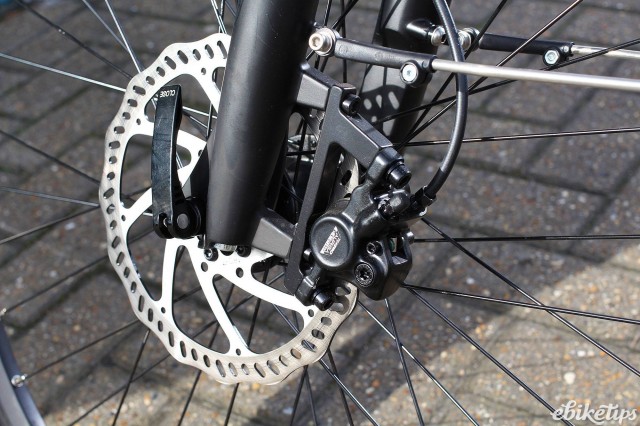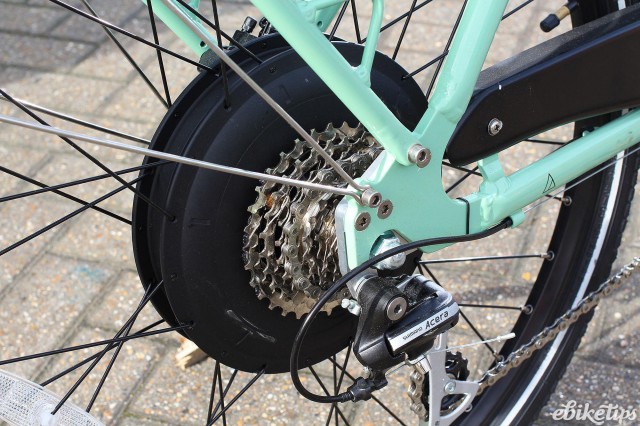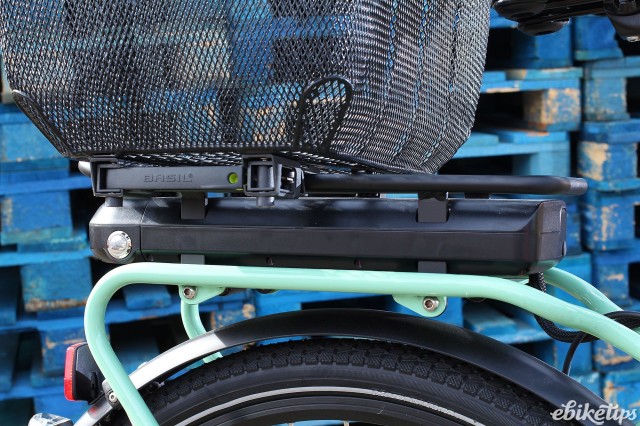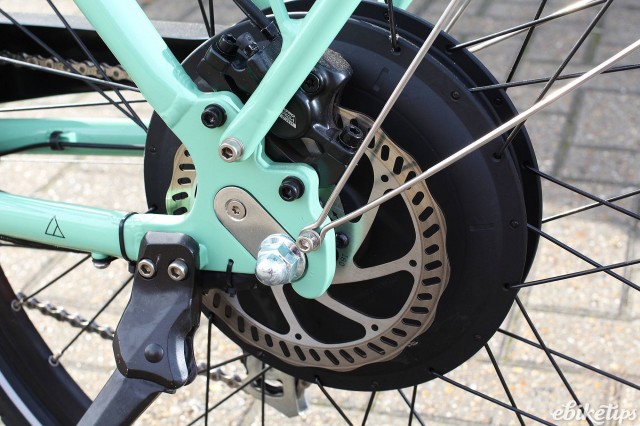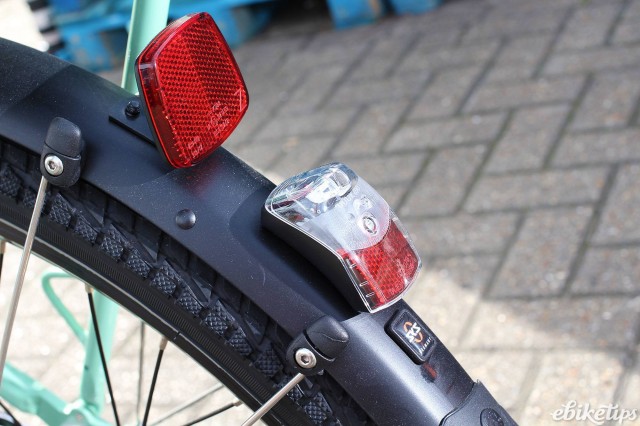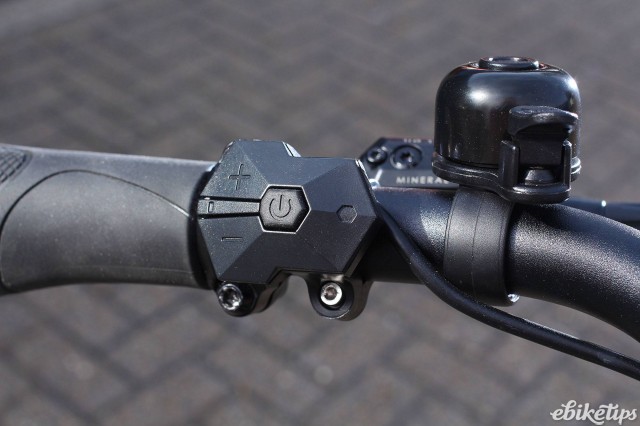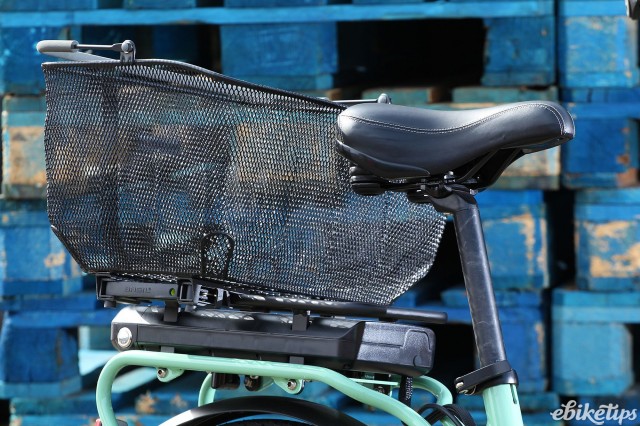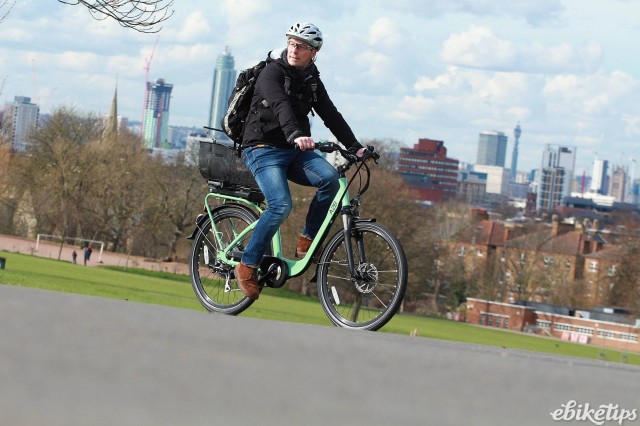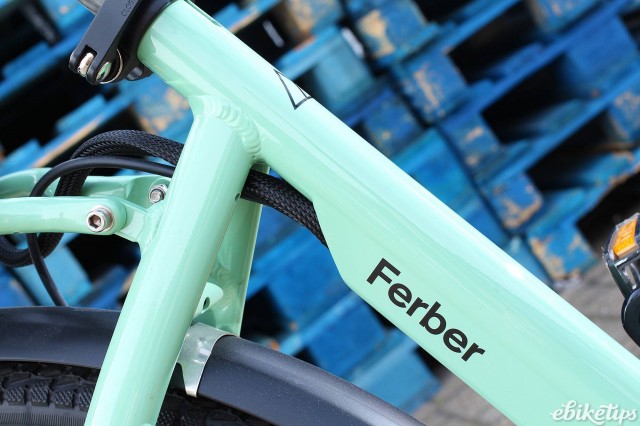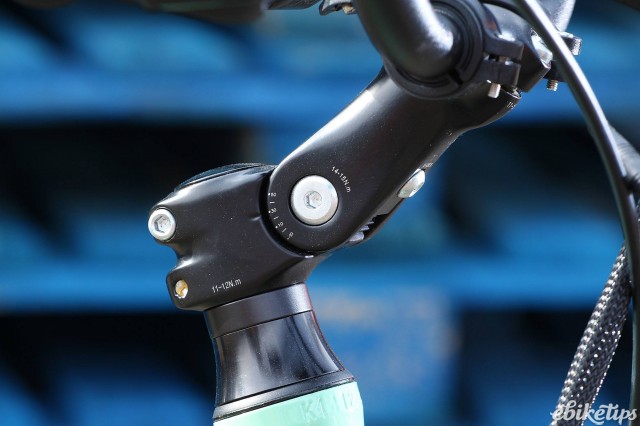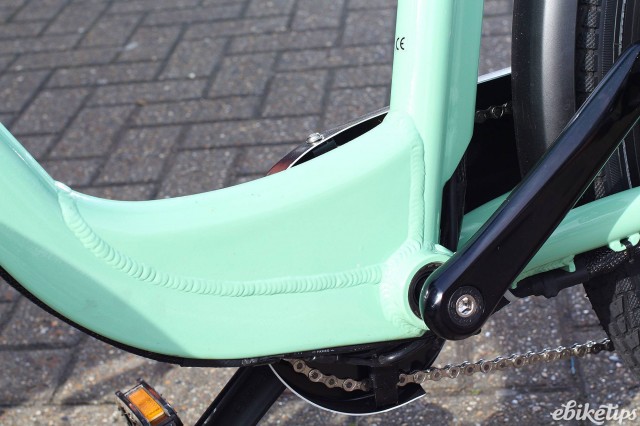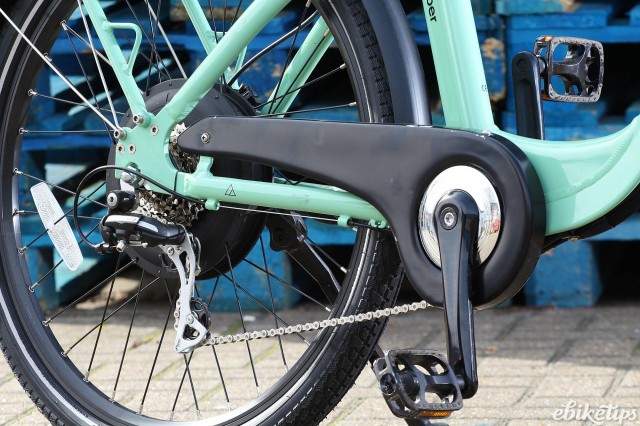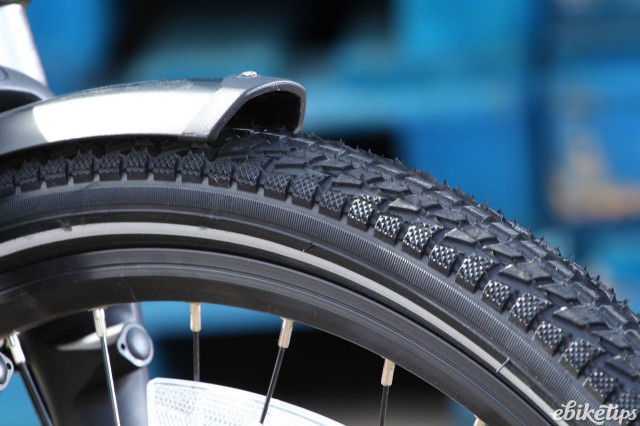A2B Ferber
Overview
- Nicely specced for city cruising
- Quiet and efficient
- Good luggage options
- Frame is a bit flexy
- Suspension fork isn't really necessary
- Sometimes a bit slow from a standstill
A2B are a UK based e-bike company with German design wing. That Germanic penchant for clean lines is clearly visible in the Ferber. The bike reflects the classic Dutch step through roadster frame layout, with an ultra low slung single alloy frame member. The benefit of this extremely open frame design is the ability to board the bike with the absolute minimum of leg lift - ideal for anyone who can’t, or doesn’t want to, manage top tubes.
The rear wheel houses the 250w hub motor and is powered by a slim 317Wh Lithium Ion battery housed on the bikes integrated rear rack. Control of the power delivery is via its own LCD display which was large enough to see and well laid out. Unless you love your data you’ll only be glancing at it periodically to check on battery usage and available range.
Shimano’s Alivio transmission is dependable: not quite as durable or slick as some of the more expensive Shimano groups, but good nonetheless. The Ferber is designed around 26in wheels, unlike most traditional roadsters which roll on larger diameter 29in/700c wheels. The Kenda tyres performed well and gripped the occasionally iffy central London roads well enough to pass unnoticed.
A2B claim a range of 100km or 60 miles depending on the power setting you choose and the terrain you ride. We used a half of the available full battery in a couple of hours of cruising the streets of the capital in maximum power setting. Realistically you’ll be getting more like 30-40 miles out of the Ferber under normal conditions.
Justin says: The Ferber delivers its power in a much more sedate manner than some of the other e-bikes of the same power that we’ve tested at ebiketips recently. With a maximum torque delivery of 35Nm, less than half that of the most aggressive e-bike motors, you’re away from the lights with a genteel swish to match your pedalling.
It feels really nice, though in central London we did find ourselves making some space at the lights or in standing traffic so that we’d have an extra half second to put power to the pedals and let the power kick in. Once moving the Ferber is nimble and comfortable, riding the cracks and pot-holes with aplomb, a side effect of the open, un-braced frame that's got a bit of flex in it. The same un-braced nature of the frame does make it feel a bit vague at times. Not that you notice much when you're gliding along, but it's worth noting.
If you’re after a classic looking Dutch step through roadster, the Ferber shoulc be on your list of possibles.
Dave says: The Ferber is made for leisurely progress and the ride feel delivers on that. It’s not a bike to be hurried, so if you’re after an e-bike that darts away from the lights and reaches its maximum assistance speed in double quick time, this isn’t the bike for you. It’s a very pleasant ride experience though, and the power curve of the motor is well-balanced which makes for easy city cruising.
It’s a practical bike, too. The rear rack uses the RackTime standard which means you can bolt all sorts of things to it, as well as using standard panniers. You get a kickstand, half-chaincase, mudguards and lights as part of the package, so you’re sorted for city riding (so long as you remember to bring a lock, just chuck it in the basket). Disc brakes are a very welcome choice and they don’t, for me, spoil the classic look of the bike. The suspension fork is probably surplus to requirements on such an upright bike where your weight is predominantly on the rear wheel, especially given the forgiving nature of the frame.
The Ferber is certainly a bike to consider if you’re happy cruising around town and you’d like a lit bit of extra oomph to help you to do it more frequently, or for longer distances.
